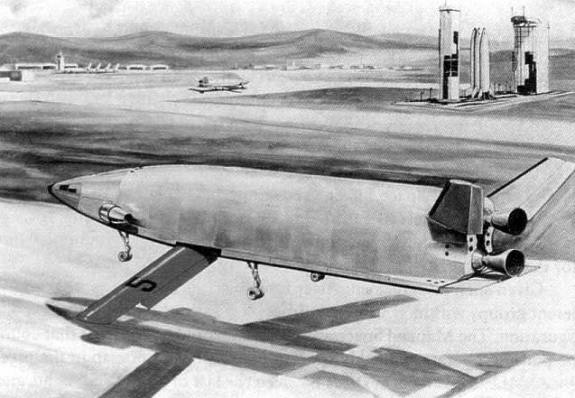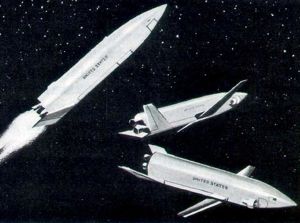
Home - Search - Browse - Alphabetic Index: 0- 1- 2- 3- 4- 5- 6- 7- 8- 9
A- B- C- D- E- F- G- H- I- J- K- L- M- N- O- P- Q- R- S- T- U- V- W- X- Y- Z
Triamese

Triamese
Credit: NASA
Status: Study 1968. Payload: 11,340 kg (25,000 lb). Thrust: 6,679.00 kN (1,501,498 lbf). Gross mass: 518,456 kg (1,142,999 lb). Apogee: 185 km (114 mi).
Two of the Triamese vehicles would supply propellants for the engines of all three units during ascent. The orbital element continued to orbit with its engines fed by its own internal propellant supply. The projected payload capability was 11,340kg into a low-inclination Earth orbit or 8,390kg into polar orbit from the Kennedy Space Centre. Up to 12 passengers could have been carried in the vehicle's 5.2 x 4m cargo bay; the booster cargo compartments would have been outfitted with additional propellant tanks. General Dynamics claimed that the marginal launch cost would be as low as $0.3 million in 1969 dollars, i.e. $1.36 million at 1999 economic conditions ($120-200/kg). The Triamese vehicles would have incorporated fold-out wings plus jet engines for atmospheric cruise & horizontal landing at a standard airport runway. Unlike the partially reusable drop-tank Starclipper or McDonnell-Douglas ILRV designs, the Triamese could be launched from inland areas in any direction without undue hazards to people or property on the ground. The operating cost would also be less, although the vehicle would weigh more and be slightly more complex to maintain and operate than a traditional two-stage-to-orbit VTHL spaceplane. The structural design was quite simple and consisted of an expendable launch vehicle-type structural core (propellant tanks, thrust structure+engines) protected by an aerodynamic fairing to provide thermal protection. The propulsion system would have consisted of two 1,112.5-KN thrust P&W XLR-129 oxygen/hydrogen engines. The projected gross lift-off weight was 518,456kg.
LEO Payload: 11,340 kg (25,000 lb) to a 185 km orbit at 28.00 degrees. Launch Price $: 0.300 million in 1968 dollars.
Family: orbital launch vehicle, Winged. Country: USA. Agency: Convair. Bibliography: 510, 511.
 | Triamese Credit: NASA |
Back to top of page
Home - Search - Browse - Alphabetic Index: 0- 1- 2- 3- 4- 5- 6- 7- 8- 9
A- B- C- D- E- F- G- H- I- J- K- L- M- N- O- P- Q- R- S- T- U- V- W- X- Y- Z
© 1997-2019 Mark Wade - Contact
© / Conditions for Use